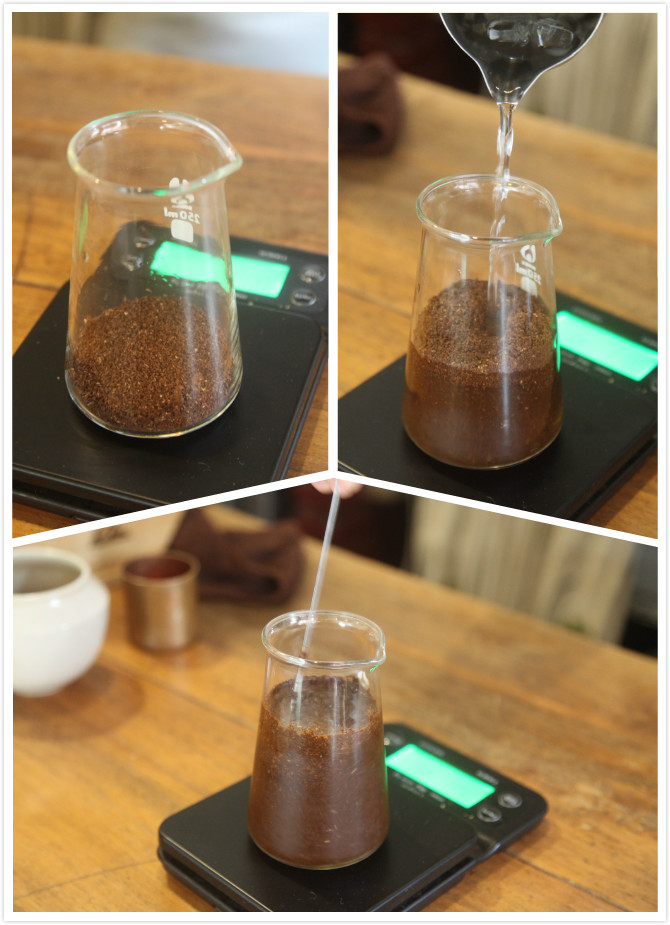Letter of Gakuyuini and Jiagu excellent treatment Factory of Kenya Coffee Kirinyaga Chili Yaga

Professional coffee knowledge exchange more coffee bean information please follow the coffee workshop (Wechat official account cafe_style)
Kenya Kirinyaga Gakuyuini AA
Class AA of Chiyaga Jiagu excellent treatment Plant, Kenya
Treatment: washing Washed
Baking degree: shallow baked Light
Name: class AA of Chiriyaga and Shigu Jiagu excellent treatment Plant, Kenya
Baking degree / treatment: shallow medium culture / water washing treatment
Flavor description: red meat grapefruit, vanilla mixed with citric acid juicy and clear, a little western pear tail, sweet and long
Recommended water temperature: 90 degrees
It is suggested that the time for bean cultivation should be 7 / 10 days.
Taste period: it is recommended to finish brewing within three months to avoid the loss of aroma and flavor of coffee.
Coffee roasting process
In the process of roasting coffee beans, as the roasting time lengthens, coffee beans will go through ten processes, through which we can better understand the correlation between coffee flavor and coffee flavor.
Green raw bean stage
Start baking, the temperature rises slowly, and the coffee remains light green, which is not suitable for drinking ❌
Yellow dehydration stage
With the increase of roasting time, the color of coffee slowly changes to light yellow, with the aroma of grass, but the coffee beans at this stage are still not suitable for drinking.
Fueling stage
The water in the coffee beans began to evaporate, producing water vapor.
Primary explosion stage
At this point, you will hear a crisp popping sound. The sugar content of coffee is about to begin caramelization, which is usually used for cup testing.
Light baking stage
At the beginning of the explosion, the coffee beans are in a light baking state, which is commonly called shallow culture, and the coffee beans at this stage are already suitable for drinking ⭕.
Moderate baking stage
After the caramel reaction is about degrees Celsius, the oil begins to seep out, the bean body begins to expand, and the coffee is in a medium culture state.
Middle and deep cultivation stage
Between moderate roasting and second explosion, the taste of coffee is almost sour, and the concentration will be more intense, which is generally called medium-deep culture.
Second explosion stage
The second popping sound is louder than the first one. At this time, the coffee is in a state of deep roasting, which is generally called deep culture.
French baking stage
The color of the coffee has become very dark and close to black, the sugar is exhausted, it begins to smoke, and the structure in the bean body disintegrates, which is called French roasting.
Coke burning stage
Coffee beans have been completely burnt, can not drink any coffee flavor, can no longer drink.
Introduction of coffee flavor
There are many coffee producing areas, even different estates, and most of them fall into the so-called coffee belts, because there are many environmental and climatic restrictions on growing Arabica coffee, and therefore, Arabica coffee is sensitive to climate. Different varieties and the same varieties will produce different flavors of coffee in different environments and climatic conditions.
If you like nutty cocoa,
Try coffee beans from Sumatra, Panama, Colombia, Brazil, Jamaica, Puerto Rico and Dominica
If you like fruit flavor
Consider coffee from Kenya, Tanzania and Ethiopia.
If you like the sweet and sour smell of flowers
Consider Guatemalan and Honduran coffee.
Important Notice :
前街咖啡 FrontStreet Coffee has moved to new addredd:
FrontStreet Coffee Address: 315,Donghua East Road,GuangZhou
Tel:020 38364473
- Prev

Kenya FAQ Coffee Katongboya Atomboy Processing Plant Barichu Bari Bamboo Cooperative
Professional coffee knowledge exchange More coffee bean information Please pay attention to coffee workshop (Weixin Official Accounts cafe_style) Kenya A-class FAQ-Gatomboya, Mutwewathi, Gakuyuini processing plants Selected batches The latest production season in 2017, Kenya is very well-known three processing plants to serve as raw bean washing production Kenya has seven processing plants ranked in the world
- Next

Ngandori FCS Mwiria Moria treatment of Coffee Gondoli Cooperative in Enbu, Kenya
Professional coffee knowledge exchange more coffee bean information please follow the coffee workshop (Wechat official account cafe_style) Kenya Embu Ngandori FCS Mwiria factory AA TOP Kenya Embu cooperative Moria processing plant source: google map raw bean merchant cup test: you can feel fresh citrus, lemon peel, orange juice, lai when sipping
Related
- Detailed explanation of Jadeite planting Land in Panamanian Jadeite Manor introduction to the grading system of Jadeite competitive bidding, Red bid, Green bid and Rose Summer
- Story of Coffee planting in Brenka region of Costa Rica Stonehenge Manor anaerobic heavy honey treatment of flavor mouth
- What's on the barrel of Blue Mountain Coffee beans?
- Can American coffee also pull flowers? How to use hot American style to pull out a good-looking pattern?
- Can you make a cold extract with coffee beans? What is the right proportion for cold-extracted coffee formula?
- Indonesian PWN Gold Mandrine Coffee Origin Features Flavor How to Chong? Mandolin coffee is American.
- A brief introduction to the flavor characteristics of Brazilian yellow bourbon coffee beans
- What is the effect of different water quality on the flavor of cold-extracted coffee? What kind of water is best for brewing coffee?
- Why do you think of Rose Summer whenever you mention Panamanian coffee?
- Introduction to the characteristics of authentic blue mountain coffee bean producing areas? What is the CIB Coffee Authority in Jamaica?

